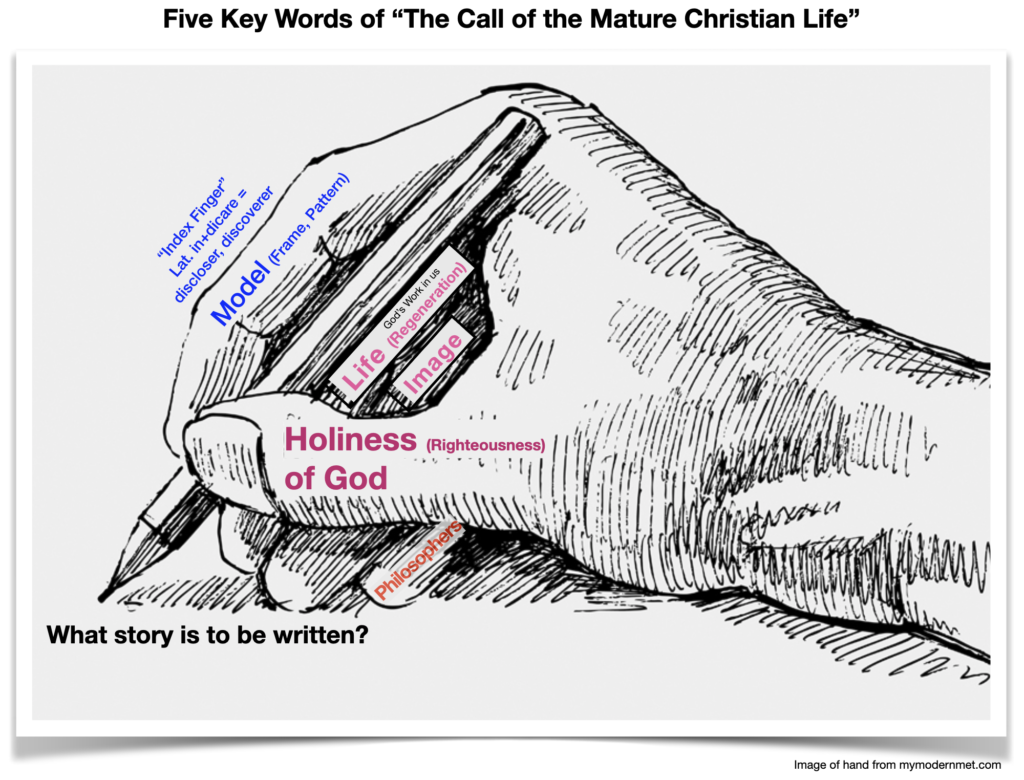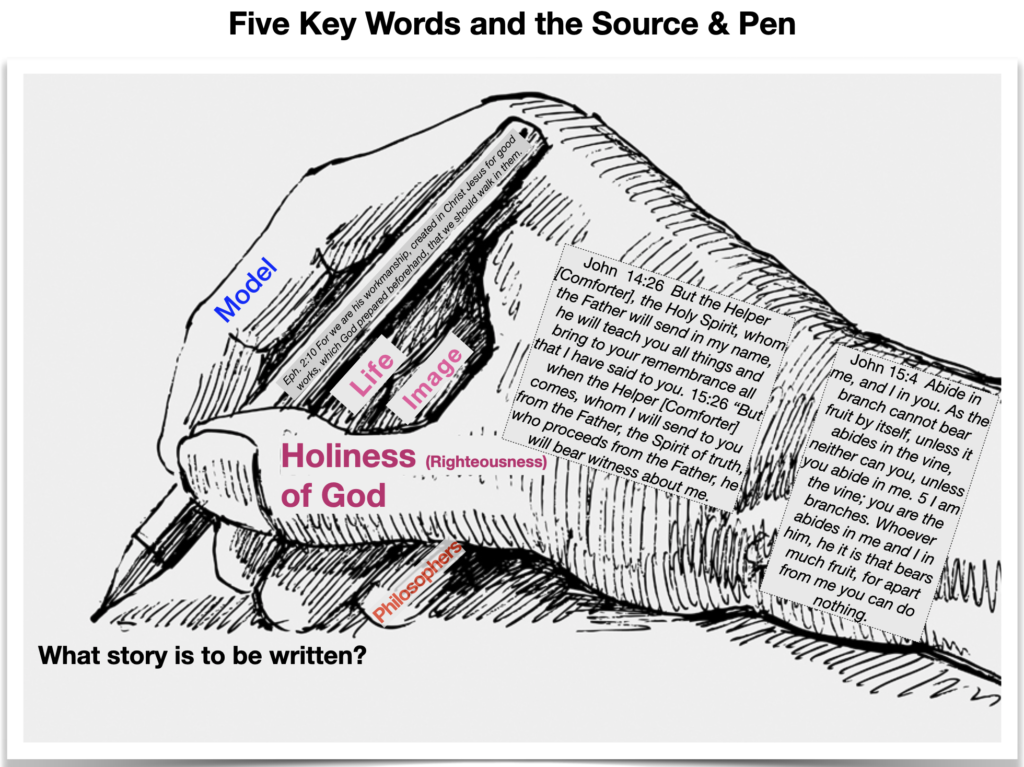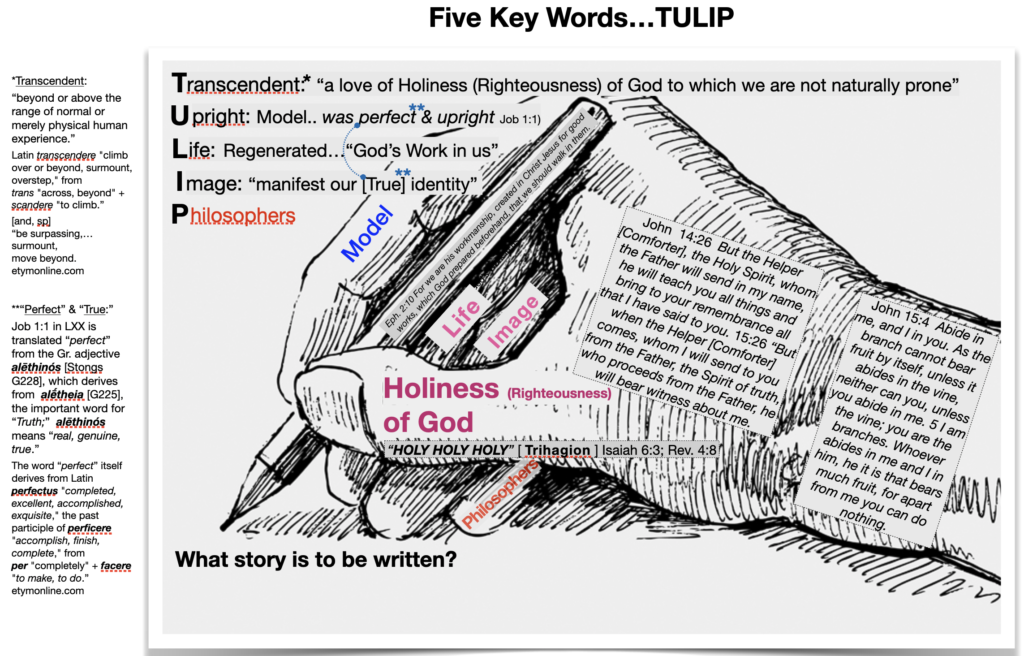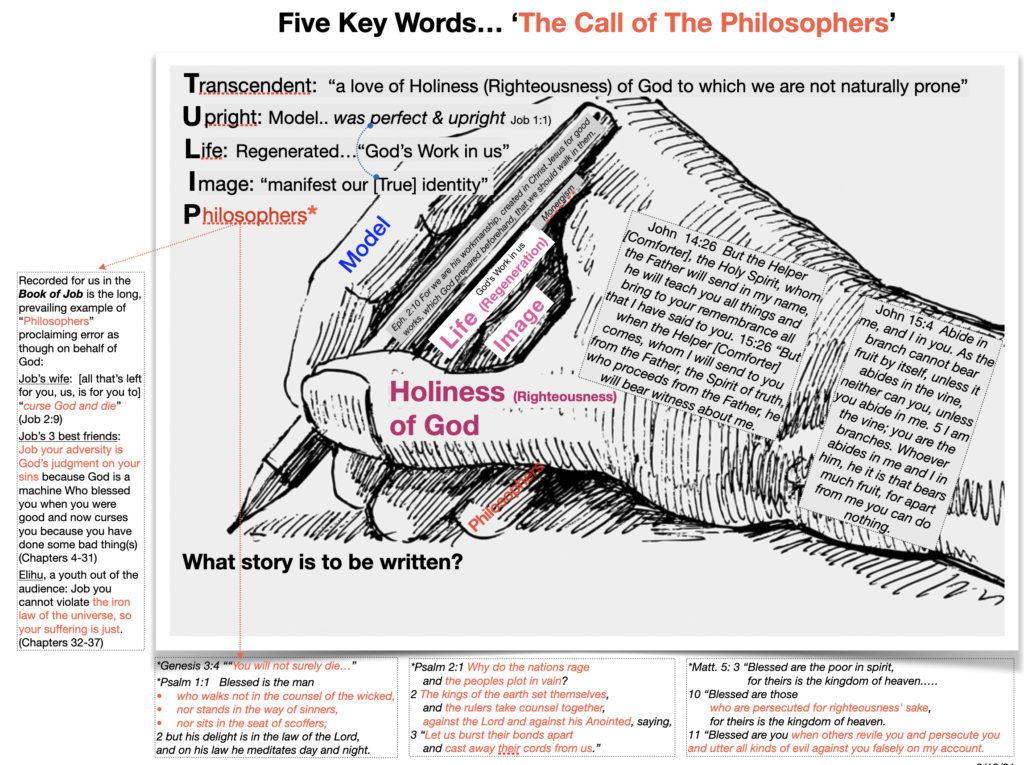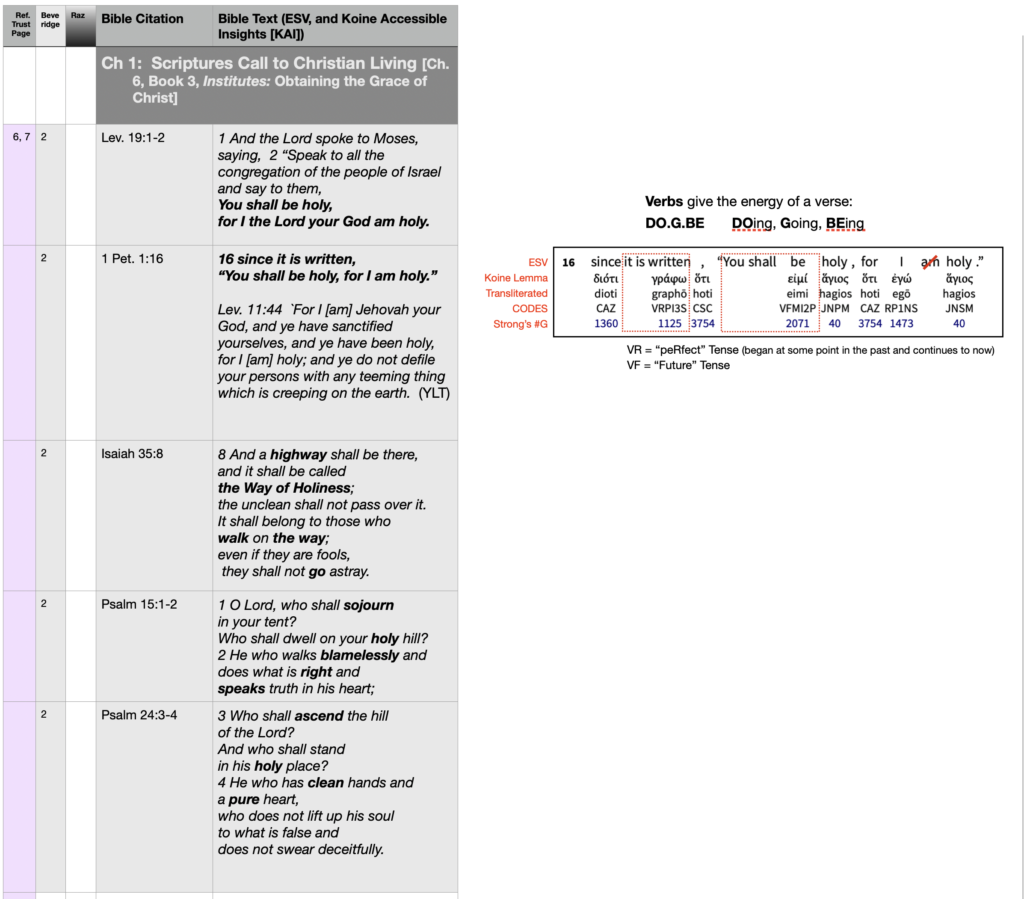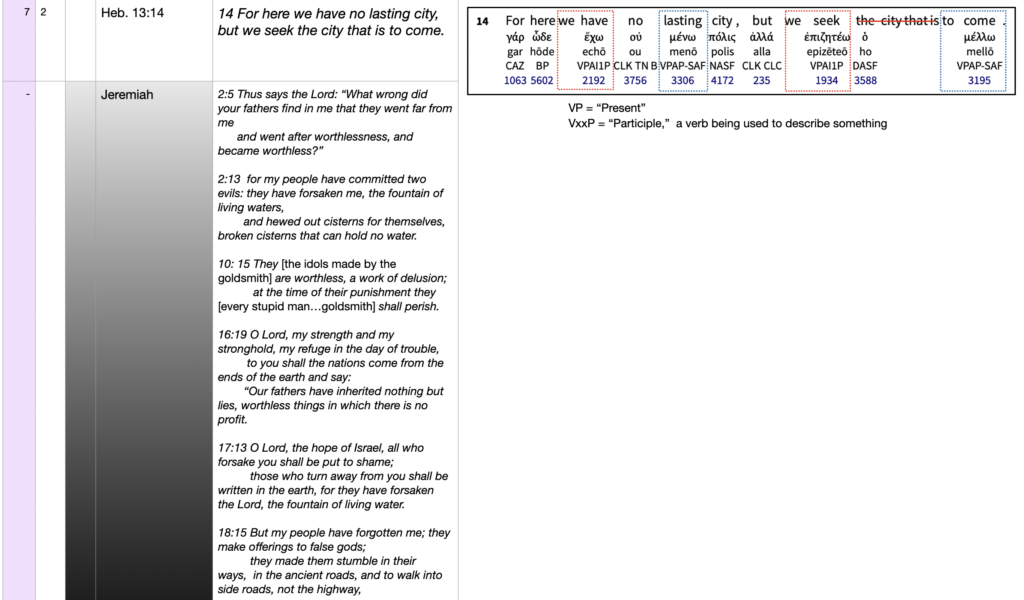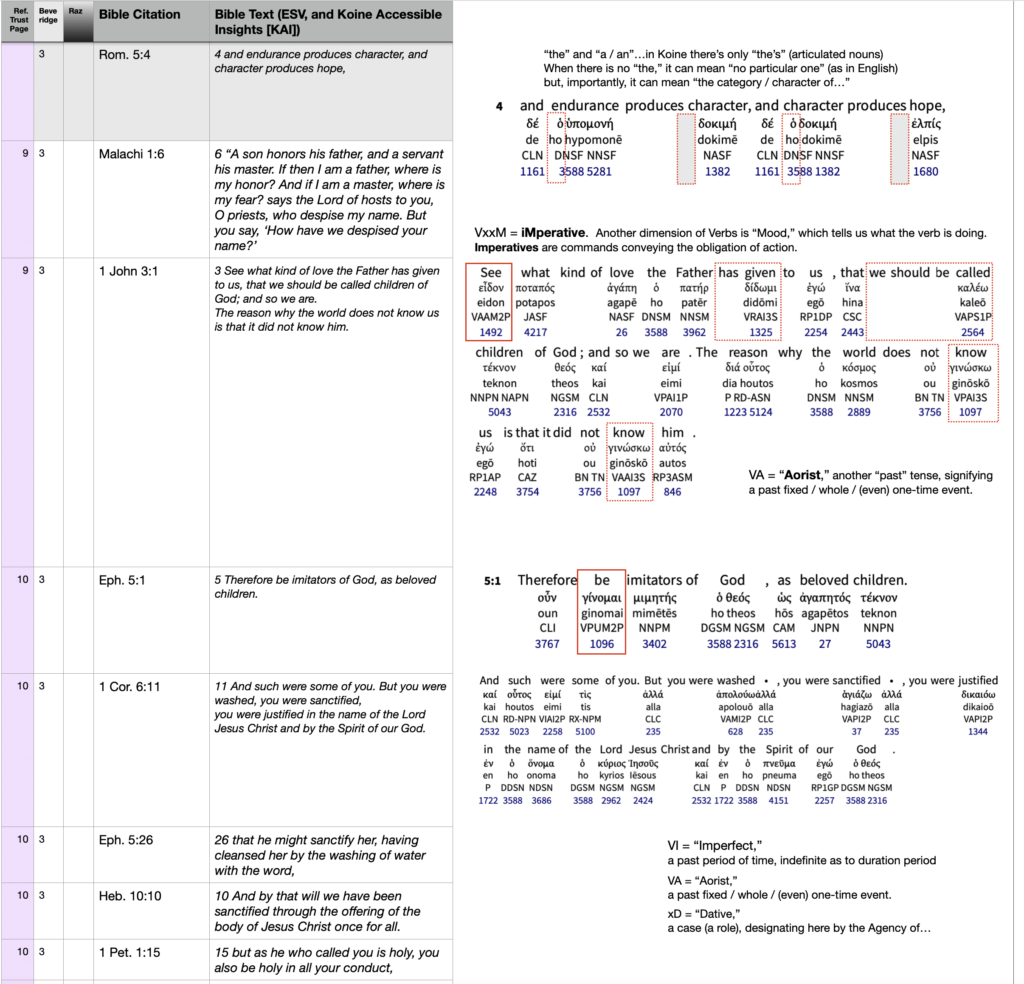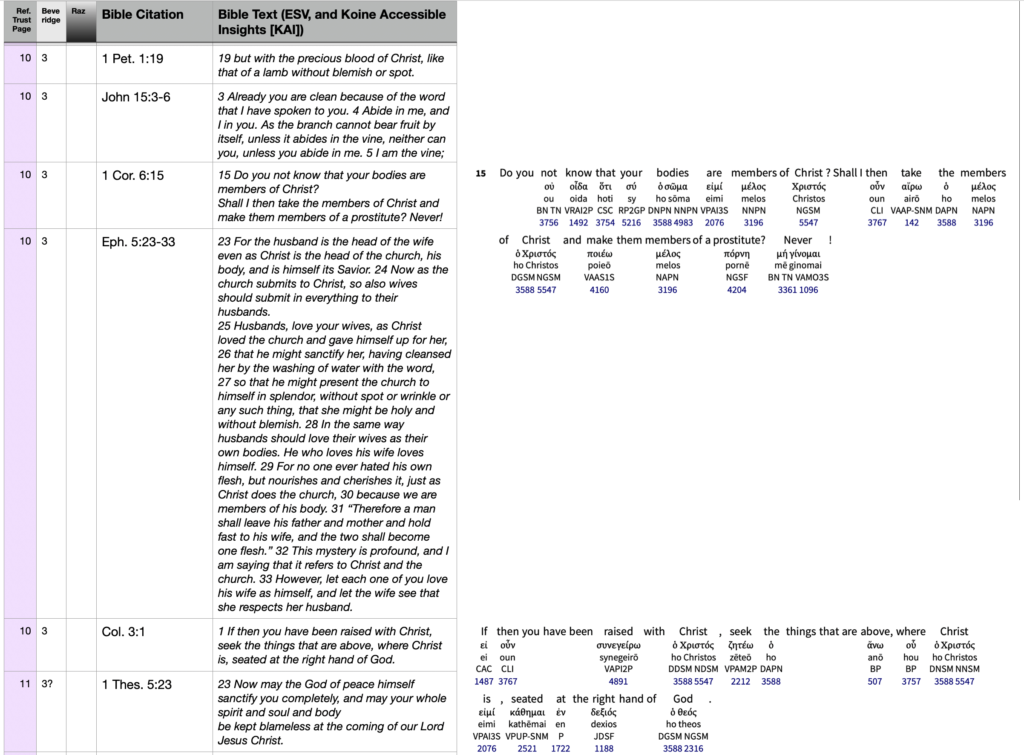Here we will begin this week’s session on D&P p. 28, beginning with “In another place…” which was identified by Calvin as Sec. 3.
Key Verses from the Bible
The Biblical texts that are cited in D&P Sec.s 3 and 4 are attached below, together with the key texts from Ch 1, and Ch 2, Sec.s 1 and2:
Image of God
As discussed below, we continue to update the separate page on the “Image” / “Imitation” of God, located here:
Titus 2:11-14
Given below is the text Calvin uses to begin this section, Titus 2:11-14 (shown here in the ESV) below:
11 For the grace of God has appeared, bringing salvation for all people, 12 training us to renounce ungodliness and worldly passions, and to live self-controlled, upright, and godly lives in the present age, 13 waiting for our blessed hope, the appearing of the glory of our great God and Savior Jesus Christ, 14 who gave himself for us to redeem us from all lawlessness and to purify for himself a people for his own possession who are zealous for good works.
Titus 2:11-14 (ESV)
Calvin makes reference of two “obstacles” to our expressing the model of the Christian life, that being the image of God: (1) “our natural inclination toward ungodliness,” and (2) our “worldly desires that see to ensure us all the more.”
Ungodliness
Calvin here uses two key words translated by D&P as “superstition” and “contends” with respect to our natural response against godliness.
Superstition
Calvin’s Latin original has indeed the word superstition, specifically: “superstitiones.” Clearly our English word is a transliteration of such Latin original; however, it does not mean in English what it meant in Latin at the time of Calvin. So let’s dig a little with Calvin on this.
The Latin word comes from its root of “superstare,” made up from two further roots “super” and “stare,” both of which look familiar to our English reading eyes but, alas, these roots mean something different than we expect, and the difference is important. “Super” in Latin means “over” in the sense of “on top of” or “above.” So this is close to how we use the term in cases like “Superman,” but not in the sense of “superior” or something really great as in high value. “Stare” in Latin means “to stand,” deriving almost directly from the ancient language word (Proto Indo-European PIE) root. So “superstition” at the time of Calvin’s writing was holding to (standing on) a position (perspective, worldview) superior (over) “the fear of God.” Such “superstition” is fundamentally in opposition to any such fear of God, or “fear of the Lord” which phrase occurs 28 times in the NKJV, in addition to “fear of God” occurring 10 times.
So, we have two big ideas that stand in opposition: “superstition” and “fear of” God or the Lord. Which one is primary? And, so what? From the above deeper dive on “superstition” we should be able to recognize that as Calvin used the term it is about a person’s claim of personal sovereignty above the alternative which is a person’s utter humility, “fear,” confronted by the realization of a Holy, Sovereign, Creator-God and my rebellion by nature and will in violation of my Creator’s Will, and to Whom I am presently and eternally accountable. Calvin is observing, what the Scriptures clearly teach in many places, that all us, by nature, choose self-sovereignty under which God is (by our deranged judgment) in subjection to us. To cohere such an perverted view (and it is literally “perverted” as the word means to “turn away”) requires all manner of mental gymnastics and fabrication such as: “this is how I feel about X, and since God made me, and God is basically love love love, what I feel must be morally right and even praiseworthy in God’s eyes,” or “if God even exists, He, or She, or It, relinquished any rightful claim on me, as I am a sovereign after all, so if it feels right to me, it is right for me, and it is not the business of anyone else, even God…if there is such a thing…and even if there is, such a thing then on Judgment Day I will tell God exactly this and God will have to agree with me.” “Superstition” as Calvin uses the term, is about me ruling the universe of God’s Creation by whatever powers and opinions I may have about whatever I am thinking or feeling.
Contends
The second word translated by D&P on p. 28 is “contends,” as “anything that contends seriously with the fear of God.” This word “contends” translates Calvin’s Latin “pugnat.” As one can almost guess, “pugnat” comes from the Latin root that means “to fight” particularly by hand to hand combat. (We do get the English word “pugilist” which means a person who fights with their fists, i.e. a boxer, and comes from a PIE root that means “five” as in reference to five digits of the hand). So the image being conveyed by Calvin, which again captures the essence of many places in Scripture, of all of us actively fighting even down to our last ‘weapon,’ our fists, against God, something like the raised fist of a political or social protestor or the expression of road rage against another driver. It captures that propitious night on the boundary of the Promised Land, when Jacob was returning from a 14-year exile and meeting up with his brother Esau who he had cheated and fled. We learn from Scripture that on that last night, an angel of the Lord appeared to Jacob, in a parallel situation to his 14-year earlier experience of “Jacob’s Ladder” when he was leaving the Promised Land in flight. That appearance and direct apprehension of a pre-incarnate Christ was not a lovely fireside chat, as part of a “welcome home” from God Himself. On the contrary, it was an all night warfare whereby Jacob fought against God, as was his nature from birth, and ours too. At the morning, God did two things: He permanently disabled Jacob’s hip creating a lifelong limp as a sign, and, as another sign, He gave Jacob a new name: Israel, which means one who contends with God (“-el”). It is interesting that when the nation of Jacob’s descendants was ‘re-born’ in the Promised Land in May 1948, their first President (David Ben-Gurion) chose the name “Israel” for that nation we know by that name today; until the Tribulation when many then will become Messianic Jews, that nation continues to contend against their Messiah.
Self-Denial
So, putting “contends” with “superstition” we get the essence of a very important realization: we, by nature, put ourself above God as self-sovereign and from such position engage in direct combat with God about everything: God’s justice (the doctrine of Theodicy), God’s (rightful) claim to Sovereignty, His judgment on our thoughts and acts of sin by our nature and choice, the inadequacy of His provision and even what we may perceived is His proper / unjust management of the universe.
This total inversion of rightful perspective brings us all face-to-face with what must be our proper response, namely: self-denial. This has been recognized by believers as the most-difficult and most-necessary of first steps, again derived from ‘digging’ into the Scriptures. A more elegant term, and the basis of much ancient writing, is self-abnegation, often just “abnegation.”
Hence, in Calvin’s Little Book, he immediately follows his opening chapter of “the call” (summarized previously by the five-finger charts presented in Week #3), by two chapters on self-denial, Ch 2 and 3, subsequently comprising the major portion of the Little Book. No work is more difficult, nor does it ever end (in this life). Hence, Jacob, now Israel, had his “cross” to bear which would bless him as an ever present reminder of the price of life in the Promised Land, and God’s Sovereign control of same.
Greek Annotated Interlinear of Titus 2:11-14
A pdf personally annotated for deeper thinking about this important text used by Calvin is given below:
